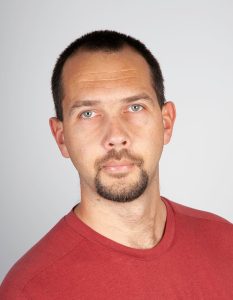Meet the Trainer – Imre Gaspar

Meet Dr. Imre Gaspar, Senior Research Assistant in the Kikuë Tachibana Group at the Institute of Molecular Biotechnology in Vienna, Austria, which focuses on understanding how chromatin is spatially reorganised in totipotent cells.
What is your research focus and why did you choose to become a scientist?
I’m interested in the central dogma, that is how gene expression is regulated on the transcriptional and post-transcriptional levels and how these regulations allow development of an organism.
I became a scientist because I always fancied solving riddles – and as a scientist you get to work on solving the ultimate riddle that interests us, humans.
Where do you see this field heading in the future?
Right now, there is a boom of high-throughput and omics techniques in studying gene expression allowing us to create predictive quantitative models of regulatory networks, which will allow us to get mechanistic understanding of the processes underlying development, homeostasis and pathogenesis. Microscopy analysis is already essential for the latter and is also gaining importance also in the omics studies with the advent of high-throughput hybridisation techniques.
What is your number one tip for people looking for scientific training?
Being a microscopist, it was absolutely essential for my career to receive training in state-of-the-art imaging and image analysis technologies. Courses are important, of course, but I find that the best source of training a scientist can receive is core facilities, internal trainings, and of course close colleagues in the lab.
If you weren’t a scientist, what would you be?
I have a degree in medicine, so I probably would have become a medical software developer – that profession is closest to the work of a scientist and having a background in medicine would allow me to contribute to the development of medical instrumentation.
You are organising the EMBO Practical Course ”FISHing for RNAs: Classical to Single Molecule Approaches” (15 – 20 March 2020). What is the greatest benefit of the course for the scientific community and what could the techniques in this course be used for in the bigger picture?
We are at the onset of quantitative analysis in biology: many labs have already implemented corresponding work-flows, but this principle should be spread widely, especially in the fields working on the understanding of gene expression. I expect that the single molecule techniques we will cover during the course will serve as mind-changers to help people embrace the concept of quantitative biology.